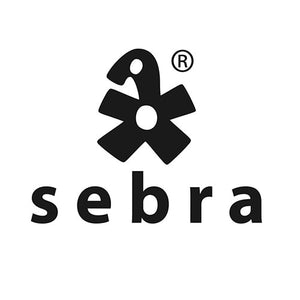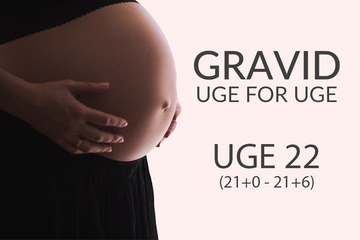There is now a little person inside your belly, with the beginnings of all external and internal characteristics of a human. This week, there is once again exciting development for the fetus, and you as parents will be offered a scan in the public health system, and perhaps it will be the first time you see your little being.
This week is a turning point for many, as the risk of miscarriage is significantly reduced from this week onward.
What is happening in the belly?
Around this week, your uterus and the fetus are growing rapidly. This causes the uterus to gradually fill the entire pelvis and thus begin to grow upward in the abdominal cavity. This will relieve the pressure on your bladder, and you may find that you no longer have as much of an urge to urinate as before.
The fetus in your uterus is starting to develop hair around this week, and the thin membrane that has previously served as the baby's skin is now becoming the epidermis and dermis. Additionally, there may be indications of small nails on the fingers and toes.
The fetus is also beginning to use the space in your uterus to tumble around in the amniotic fluid and practice human movements. These movements often occur at this stage in small jerks followed by a pause. However, the size of the fetus at this time means that very few can feel it at this stage. It is more common and expected to feel it around week 20.
Nuchal Translucency Scan
You have probably heard about it, but perhaps you are not quite sure what a nuchal translucency scan is? It is an ultrasound scan offered in the public health system, which can be performed between 11+3 and 13+6 weeks. Technically speaking about the nuchal translucency scan, it is a measurement of the thickness of the fetus's nuchal fold, which is a fluid accumulation around the neck and down along the back.
During the scan, you can see your little baby and also get a sense of how developed the baby already is at this time. It is something very special if it is the first scan and therefore the first time you will see your child. But there is another important part of this scan. During the scan, you can get information about how many fetuses there are, whether you will be parents to one child, twins, or more. Additionally, the due date can be established during this scan.
However, there is also a more serious part of the scan. During the scan, it will be examined whether there is one, or perhaps more, hearts beating as they should. The scan can also reveal malformations, and you can receive a risk assessment regarding whether the fetus has certain chromosomal abnormalities, including Down Syndrome. The risk is categorized as high or low risk, with anything under 1:300 considered high risk. Depending on your results, this will give you peace of mind regarding whether everything is as it should be or require further investigations. Based on the risk assessment, you can, together with medical professionals, evaluate the next steps for you and your baby.
Fetal Size
The little person in your womb is now about 5.5 cm and likely weighs around 40 grams. It may not sound like much, but take a look just one week back, it will make it clear to you how quickly development is progressing. In week 11, the fetus is the size of a fig, now - the week after, the fetus is the size of a lime.
Advice for partners
Around this week, you will likely have a nuchal translucency scan, if you wish to. If this is your first scan, it may be nice for you as a partner to finally see the life that has been affecting your partner for the past many weeks.
However, the scan this week can be associated with anxiety and restlessness for many, and therefore it may be a good idea for you as a partner, and for you as a couple, to discuss the possible outcomes as well as talk about your feelings and thoughts regarding the scan.
It is important that both of you allow space for different feelings and thoughts, and that you as a partner are present as support for your partner, so you can be an active part of the pregnancy, even though it is your partner who is pregnant.























































































































































